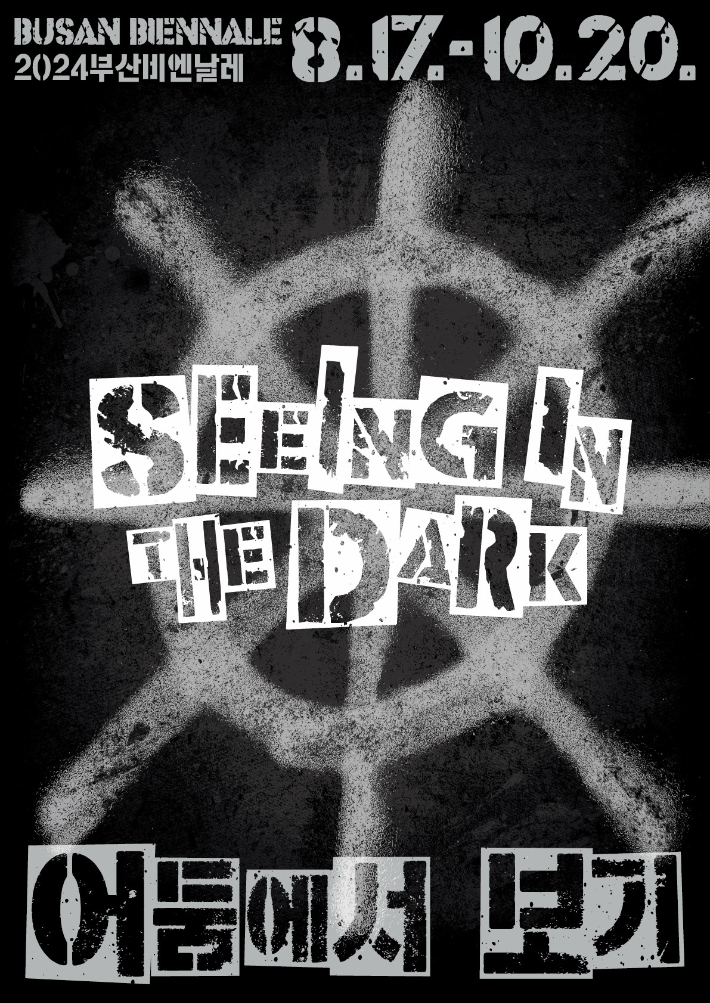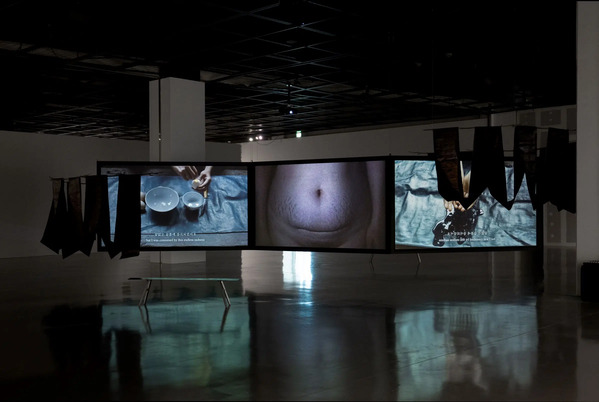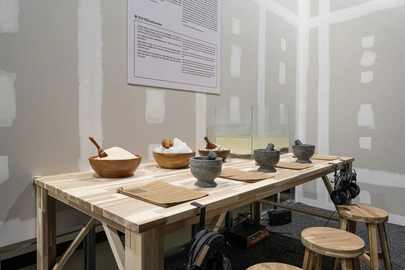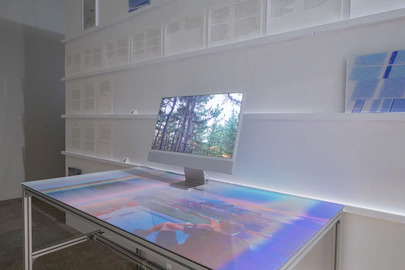
2024 Busan Biennale “Seeing in the Dark” Poster Image ©Busan Biennale Organizing Committee
The 2024 Busan Biennale, hosted by the City of Busan and the Busan Biennale Organizing Committee, announced that it will open on August 17 and run through October 20. The Organizing Committee has confirmed the theme “Seeing in the Dark” and is accelerating preparations for the exhibition, including the selection of exhibitors and works. The exhibition, led by co-curators Vera Mey and Philippe Pirotte, will utilize exhibition venues in the original city center, including the Busan Museum of Contemporary Art and the Busan Modern & Contemporary History Museum.
This theme, “Seeing in the Dark,” proposes to re-imagine our place in the “darkness” of today’s world: an attempt to reimagine our world outside the framework of conventional thinking in the context of emerging systemic changes, contradictory situations such as surveillance, and normative social structures, and to find a higher level of self and nature. Here, ‘darkness’ and ‘seeing’ are interpreted in a broad sense, including expanded senses and enlightenment beyond physical concepts.
“Seeing in the Dark” may seem like an impossible or restrictive act, but it actually symbolizes a new way of looking at our current state of affairs. In this context, the concept of “pirate utopia” – an early form of autonomous anarchy – and the Buddhist concept of “dharma” – operating apart from the world – are introduced. Including these two concepts, which are both a communal society of decision-making through consultation and a space of liberation, the theme reflects the curatorial intention of exploring various mentalities and cultures and reimagining the space and world required by the times.
This year’s exhibition, as a whole, ideally envisions artworks being driven in an autonomous and unexpected way, without a centralized hierarchy. Through their works, the participating artists demonstrate how art can be ‘rewilded’, and the viewer is invited to experience the possibility of transcending the self and rewilding through the experimental exhibition organization. Deception and caprice, an important aesthetic strategy of the exhibition, will allow for a playful approach to identity and ideology instead of an essentialist or positive approach.
Darkness, a keyword in the curatorial direction of the exhibition, is a space of liberation and transformation: a space outside the framework of thought provided by normative social structures, and an area where a reimagining of the world can take place. The darkness encountered in some of the exhibition’s spaces invites the viewer to experience the experience not as a consumer who is controlled, but as a subject who must use their senses to find their way around. The exhibition, including these compositions, aims to be a voyage full of fluid, unstable, disorienting, experiences, conversations, and uncertain perspectives.
The exhibition venues will utilize the Busan Museum of Contemporary Art, which was planned as a dedicated building for the Busan Biennale, as well as the underground vault museum of the Busan Modern & Contemporary History Museum in Daecheong-dong, Jung-gu, in the original city center. In addition, the organizers have shortlisted several spaces in Jungang-dong, Daecheong-dong, and Choryang-dong, the original city center of Busan, and are planning to utilize new exhibition spaces to house the exhibition plan. Vera Mey, artistic director, said, “Busan is a city with a diverse history and has experienced the influx and settlement of many populations, and we have diversified our exhibition venues to capture this history and become part of the rhythm of daily life.”
The 2024 Busan Biennale will also have a linkage program to expand local exchanges through collaboration with local and international cultural organizations, exhibition planners, and participating artists. Based on the exhibition theme and curatorial intent, projects will be realized in the form of various genres. The pirate panel program will take the text Another Art World by Nika Dubrovsky & David Rolfe Graeber as a starting point and address keywords such as the relationship between the real and the imaginary, the representation of ‘piracy’ and deception, and pirate utopias.
There will also be a pirate carnival, a performance by collaborating organizations, participating artists and visitors. Including lectures, sound performances, and costumes, the project becomes a festival of subversion of existing values or worldviews. Inside the exhibition space, there will be a sound station that will serve as a sound archive, a DJ table and a sound system for performances, as well as listening sessions and online pop-up live radio. In addition, there will be related programs such as portal unmasking and sustainability projects that will satisfy the audiovisual senses of visitors, examine contemporary issues, and invite them to leave the framework of existing thinking and enter a space full of new imaginations and possibilities.
The organizers announced that the 2024 Busan Biennale will open two weeks early and run for 65 days from August 17 to October 20. The Busan Biennale, which began as the Busan Youth Biennale in 1981, changed its name to Busan Biennale upon its incorporation in 2000, and since then, it has maintained the tradition of opening in September. This move reflects the organizing committee’s direction to add a cultural and artistic aspect to the summer, which symbolizes the city of Busan, and to actively attract family visitors who are on vacation.
The organizers also unveiled 10 of the participating artists (teams) on last March 26. They include South Korean artists Bang Jeong-A, Lee Doo Won, Yun Suknam, and Eugene Jung; Monk Song Cheon, director of the Tongdosa Museum; John Vea; Golrokh Nafisi and Ahmadali Kadivar; Cheikh Ndiaye; Nguyễn Phương Linh & Trương Quế Chi; and Tracy Naa Koshie Thompson. The full list of participating artists will be announced in May.





















